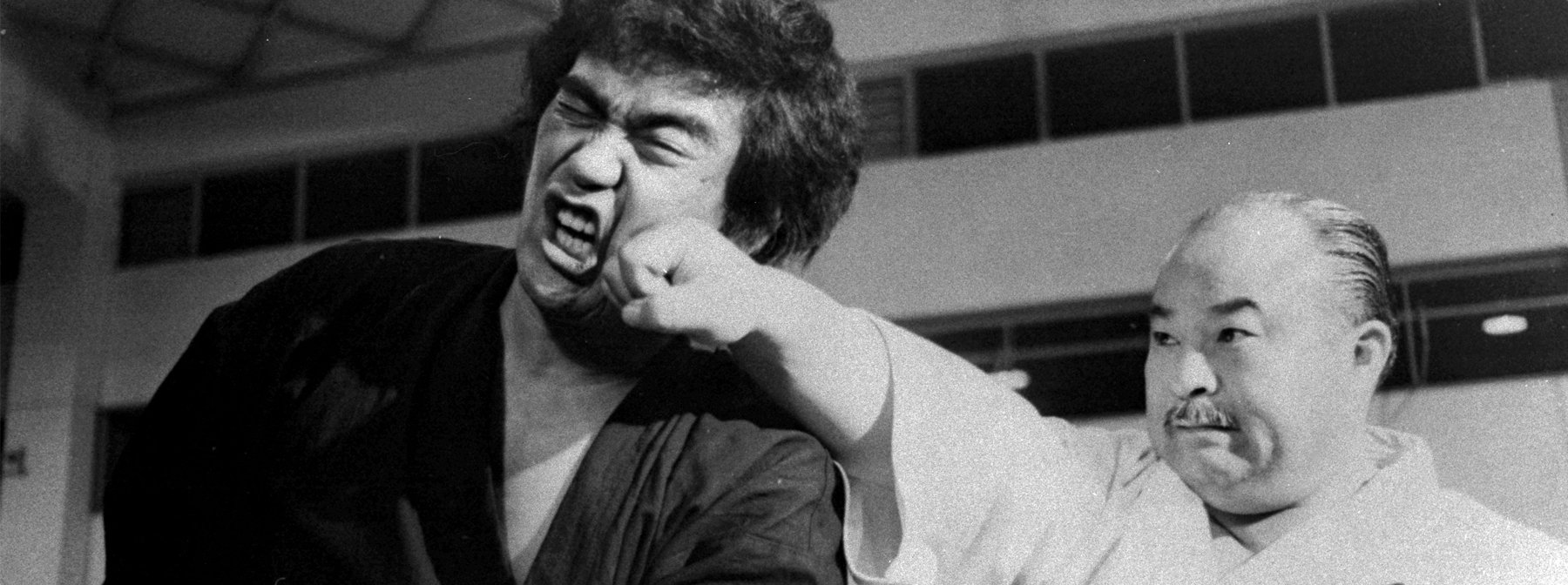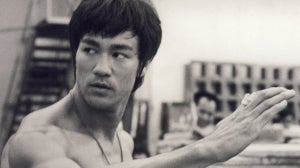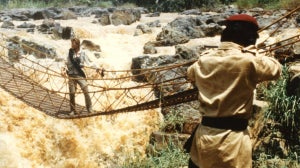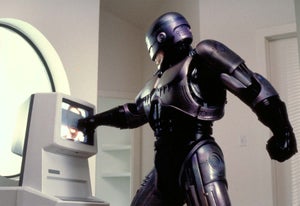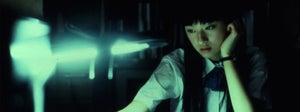
In a 2021 article for BBC Culture, I marked the 20th anniversary of Takashi Miike (Audition)’s gruesome cult classic Ichi the Killer with an investigation into the subject of violent filmmaking in Japan.
The experts I spoke to highlighted Miike’s roots in the garish, straight-to-video ‘V-Cinema’ movement of the ‘80s and ‘90s — and how the film’s chaotic aesthetics were indebted to the violent, mass-produced genre films of the ‘70s. But what I found most interesting was learning about the Japanese censorship board, Eirin — which has historically been far more accepting of violence on-screen than the likes of the BBFC or MPAA.
Ichi the Killer was released in the UK with over three minutes of footage sliced out — scenes of excessive mutilation, savagery and “sexual pleasure from violence” were deemed unacceptable for local consumption. But in Japan (according to Kyoto University professor Chika Kinoshita) “there is almost no limit to the violence [allowed] on screen.” The Japanese constitution — which protects freedom of speech and expression — doesn’t permit such stringent censorship.
With Arrow’s release of 1974 karate-nasty The Street Fighter trilogy, we have a fresh reminder of why so many perverse Japanese films have lit up our imaginations over the decades: they’re exotic, exciting, and (according to the BBFC and the MPAA) a serious danger to the public. Slapped with an X-rating upon its release in the States, the original Street Fighter would offer a prime example of that illicit flavour of foreign cinema — and of course, there’s a whole legacy of ultra-violent Japanese films that go with it. Read on for more examples that you may have missed.
Jigoku (Nobuo Nakagawa, 1960)
Nobuo Nakagawa built a reputation in the late ‘50s for imaginative low-budget horror films for ShinToho (Stray Dog; The Life of Oharu) — but by the end of the decade, the once-powerful studio was facing bankruptcy. For their final production, Nakagawa would pull out all the stops — utilising vivid colour photography and masterful art direction for Jigoku (literally: Hell), a ‘golden age’ classic that would pre-date horror staples Kwaidan, Onibaba and Kuroneko by years, while far surpassing them in terms of carnage and gore.
It begins with a fatal car crash that takes the life of a local gang leader. Driver Tamura (Yoichi Numata, Ring) fails to take responsibility for the crime, and soon he and passenger Shirō (Shigeru Amachi, The Tale of Zatoichi) find all manner of people around them beginning to drop like flies. Eventually, they reunite with the departed — in Hell. Here, they are subjected to all kinds of torture and suffering, in a “vortex of torment that will whirl for all eternity.”
While there are some early warning signs (the opening credits climax with a screaming man falling into a cauldron of fire; a woman later meets a brutal fate after jumping from a bridge into a rocky crevasse) nothing quite prepares the viewer for Jigoku’s surreal and shocking finale. It’s one of the most vivid depictions of Hell ever put to screen — full of skeletal corpses that drip with gore; skewered bodies impaled with spikes and icy shards; and giant saws that cut men in two.
https://www.youtube.com/watch?v=Z45fCTOxci8
Shogun’s Joy of Torture (Teruo Ishii, 1968)
Jigoku would be re-made several times in Japan after its release, with Teruo Ishii (Blind Woman’s Curse) notably putting his own spin on the film in 1999 for what was his penultimate feature.
It arrived decades after the director had established a reputation for depravity via films like Shogun’s Joy of Torture, Orgies of Edo and The Horrors of Malformed Men — which were churned out en masse in the late ‘60s. Dubbed the ero guro (erotic grotesque) sub-genre, these films mixed softcore stimulation with torturous violence; you can read all about these proto-torture-porn films elsewhere on the Arrow blog.
The Street Fighter (Shigehiro Ozawa, 1974)
Titillating pink films and chaotic yakuza epics were everywhere in Japan in the ‘70s, as violent exploitation franchises like Female Prisoner #701 made major stars of actors like Meiko Kaji. All the while, kung fu cinema was going pow in the States — and with the death of the genre’s biggest icon Bruce Lee in summer 1973, the stage was set for a new Eastern hero to emerge in the West.
Introducing Sonny Chiba — karate king and “master of the death blow”, who would punch, kick and chop his way onto screens in the US in 1974 with the release of Shigehiro Ozawa’s cult classic The Street Fighter. Here was a martial arts film unafraid to go full tilt with the red paint: an action romp featuring eye-gougings, skull crushings, and bare-fisted castrations, hammed up by its star’s demented grimacing and posturing. It was an underground hit, despite its sordid reputation.
Chiba would double down on his violent screen persona that year when he teamed up with the ero guro king Ishii for The Executioner. But it’s The Street Fighter that retains a place in the history books Stateside. Distributed by soon-iconic film production studio New Line Cinema (Evil Dead; Nightmare on Elm Street), it was branded an X-Rating — becoming the first film to receive the rating for violence rather than sex in the process.
https://www.youtube.com/watch?v=77r9kEnq_jQ&pp=ygUYdGhlIHN0cmVldCBmaWdodGVyIGFycm93
Mermaid in a Manhole (Hideshi Hino, 1988)
A fresh take on Japanese horror cinema emerged in the late ‘80s as gory SFX became commonplace. Toshiharu Ikeda’s Evil Dead Trap riffed on Dario Argento Italo-horror with a colourful blend of booby traps and prog rock. Kiyoshi Kurosawa (Pulse) melted flesh via haunted house B-movie Sweet Home — a major influence on the Resident Evil video games. And Shinya Tsukamoto delivered DIY body horror in Tetsuo: Iron Man. Prefacing all of these was the notorious Guinea Pig series.
Anticipating Japan’s early ‘90s ‘V-Cinema’ boom (which launched sick-minded filmmakers like Miike), Guinea Pig presented six low-budget mini-features released straight-to-video in the mid-‘80s. The series features a panoply of gruesome acts — torture, mutilation, metamorphosis et al. — with latter-day admirers including make-up and special effects whizz (and Arrow Video Podcast co-host) Dan Martin, who referenced the series in his work on Brandon Cronenberg’s Possessor.
The series’ second entry, Flower of Flesh and Blood (Hino, 1985), remains the most infamous — a well-known Hollywood actor allegedly reported it to the FBI, believing it was genuine snuff. But latter work Mermaid in a Manhole arguably features the superior physical effects — with rotting garbage and worm-infested sewers providing a backdrop to this tale of an artist, his festering muse, and a kaleidoscope of blood, pus and suffering.
https://www.youtube.com/watch?v=txFfah00tMw&pp=ygUcbWVybWFpZCBpbiBhIG1hbmhvbGUgdHJhaWxlcg%3D%3D
Splatter: Naked Blood (Hisayasu Sato, 1996)
With a title like this, you’d be forgiven for assuming the worst — but Splatter: Naked Blood is surprisingly slow-burning for a movie that earmarks its set pieces from the VHS cover. It’s the story of an ambitious young scientist (Sadawo Abe, Kamikaze Girls) whose “brain secretion research” produces the ultimate painkiller for humans. As the sensation of pain is replaced by pleasure, curiosity soon gets the better of his test subjects.
There’s something a bit Unit 731 (Japan’s notorious biological experimentation unit in World War Two) about Splatter: Naked Blood. Eyes are forked, hands are deep-fried, and self-cannibalisation is freely practised. The latter scenes were even described by AllMovie as among “the most appalling in Japanese horror”. But there are also whimsical cycling montages and dream-like sequences that add a lot of atmosphere. It’s a strange blend that ultimately feels like the crucial stepping stone between the video nasties of the ‘80s and the ‘Asia Extreme’ boom of the Y2K era.
Tokyo Gore Police (Yoshihiro Nishimura, 2008)
By the late ‘00s, the fortunes of Japanese genre cinema were changing in the West. Tartan Asia Extreme — the once-booming distribution label that brought Battle Royale (Kinji Fukasaku), Audition (Takashi Miike) and Versus (Ryuhei Kitamura) to the UK — had gone into administration. And in the US, dwindling returns on Japanese horror remakes put a period of Japanophilia to bed — while Miike’s Masters of Horror Showtime TV episode was banned for its violent content.
But gory Japanese cinema did not disappear entirely from Western radars. Renegade filmmakers like Sion Sono would gain notoriety with films like Suicide Club and true-story serial killer thriller Cold Fish. Meanwhile, special effects whizz Yoshihiro Nishimura (make-up effects and production designer on Suicide Club) would gain a reputation as “the Tom Savini of Japan” after his gruesome SFX work became synonymous with an entire sub-genre of filmmaking.
‘Splatterpunk’ would evolve out of Shinya Tsukamoto’s visceral arthouse body horror into bloody packages like Anatomia: Extinction, Meatball Machine and The Machine Girl in the ‘90s and ‘00s— fore-fronting Nishimura’s gut-churning visual work in the process. When US distribution label Media Blasters gave him the opportunity to direct his own feature in 2008, Nishimura doubled down — delivering a circus of comic book gore, bodily transformations and chainsaw decapitations. The casting of Audition femme fatale Eihi Shiina as the lead — a militant vigilante in dystopian, near-future Tokyo — was the icing on the cake.
https://www.youtube.com/watch?v=1VqtYgQ0ZXo&t=29s&pp=ygUZdG9reW8gZ29yZSBwb2xpY2UgdHJhaWxlcg%3D%3D

